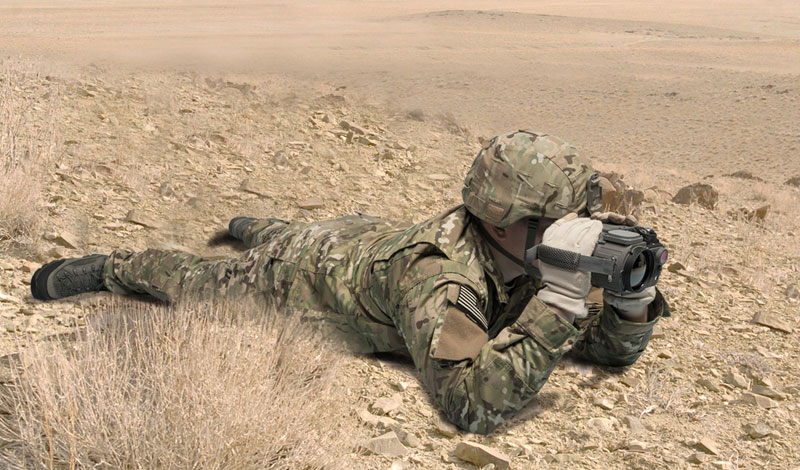
BAE Systems
HAMMER precision targeting system successfully completes Critical
Design Review for the U.S. Army’s JETS program. Photo: BAE Systems
Current systems are too heavy, lack the capability to deliver precision fire support in day and at night and do not interface easily with modern, digital radios.Systems delivered as part of the JETS program will provide the dismounted Forward Observer and Joint Terminal Attack Controller (JTAC) the ability to acquire, locate and mark for precision Global Positioning System-guided and laser-guided munitions. The TLDS component of this system will provide the dismounted Forward Observer with a common and light-weight handheld precision targeting capability.
Current systems are too heavy or lack the capability to deliver precision fire support in day and at night. Current systems are also lacking efficient interface with modern digital communications, to receive, transmit, store, display, plan, and coordinate targeting data.
The system enables dismounted observers to rapidly identify, precisely locate, and accurately mark targets for precision strike. It works in all weather and lighting conditions, and transmits targeting data to existing forward entry systems. The new targeting system will help soldiers distinguish friends from foes with satellite positioning and surveillance information, and allow them to rapidly receive, transmit, and coordinate targeting data.
In April 2013 the Army awarded two contracts to BAE Systems and DRS. Each company received about $15 million cost-plus-fixed-fee for a three-year engineering and manufacturing development (E&MD) contract to supply prototypes that will meet the JETS TLDS requirements. In the next phase the systems will go through the program’s qualification phase, in which several systems will be manufactured and tested against JETS technical requirements throughout 2014 and early 2015. The program remains on schedule for initial JETS TLDS fielding in 2016.
“HAMMER will provide forward observers and JTACs with the lightweight, compact, and highly advanced system with the precision required for GPS-guided and laser-guided munitions” Dr. Mark HutchinsBAE Systems developed the Handheld Azimuth Measuring, Marking, Electro-optic imaging, and Ranging (HAMMER) addressing the army requirement for a lightweight precision targeting solution. As such, HAMMER weighs less than one-half the weight and cost about half the cost of the targeting systems currently in the Department of Defense inventory.
The system employs the company’s Target Reconnaissance Infrared Geolocating Rangefinder (TRIGR) system which has already been fielded. HAMMER architecture enhances precision targeting capabilities by adding a compact laser marker and a non-magnetic compass. For the laser designator BAE Systems teamed with Elbit Systems of America, to provide a laser marker based on laser target designators they have developed and fielded with the U.S. Marine Corps.
BAE Systems and DRS Technologies, Inc., are required to deliver between five and 20 prototypes for testing, between 2014 and 2016. DRS, the U.S. based member of the Italian Finmeccanica group said it will design and produce their TLDS prototypes at DRS facilities in Dallas, Texas and Melbourne, Florida.

HAMMER Precision Targeting System. Photo: BAE Systems
No comments:
Post a Comment